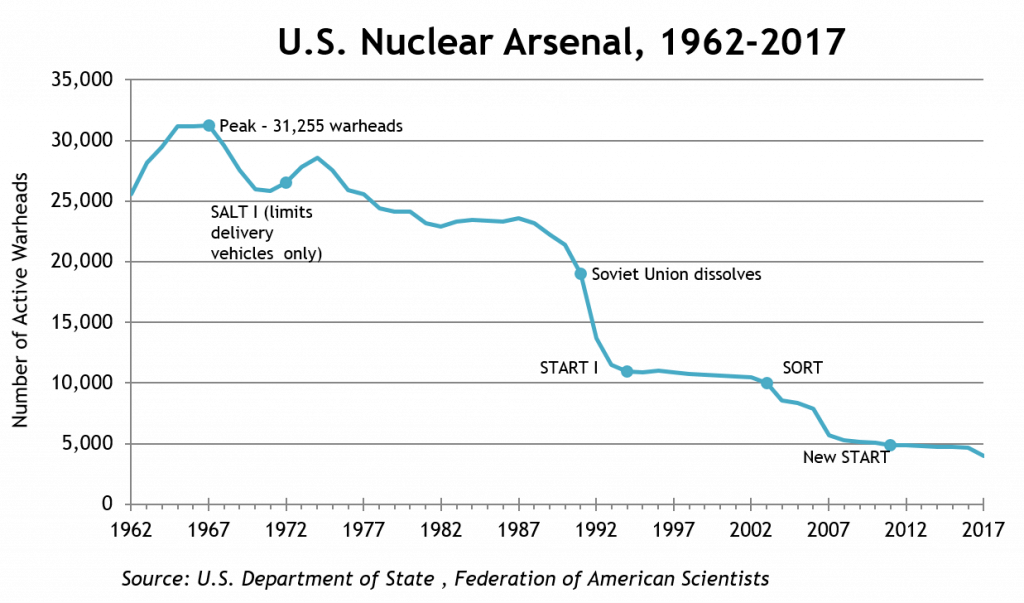The size of the U.S. nuclear arsenal has decreased drastically since it peaked at 31,255 nuclear weapons in 1967. Many of the reductions since then have come as the result of bilateral arms control agreements with Russia, including the Strategic Arms Reduction Treaty (START) I, which capped deployed arsenals at 6,000 warheads and 1,600 delivery vehicles; the Strategic Offensive Reductions Treaty (SORT), which reduced deployed arsenals to between 1,700 and 2,200 warheads each; and the New Strategic Arms Reduction Treaty (New START), which reduces deployed arsenals to 1,550 warheads on 700 delivery systems.
As the size of the U.S. nuclear arsenal has decreased, so has the pace of reductions. The slowing rate can be attributed both to some political opposition to nuclear reductions and the technological difficulty of verifying nuclear reductions at lower numbers. Despite these difficulties, further reductions are both possible and necessary.
| CHART: U.S. Nuclear Weapons Inventory (as of January 2017) | |||
| Deployed Strategic Warheads | 1,367 | ||
| Remaining Active Stockpile
Deployed Tactical Warheads Non-deployed Strategic Warheads Total Active Stockpile Retired Warheads Total |
2,651
<200 ~2,451 4,018 ~2,800 ~6,800 |
||
Source: U.S. Department of State
To learn more about global nuclear weapons inventories, refer to our Global Nuclear Weapons Inventories Fact Sheet.
Last Updated: March 2017


